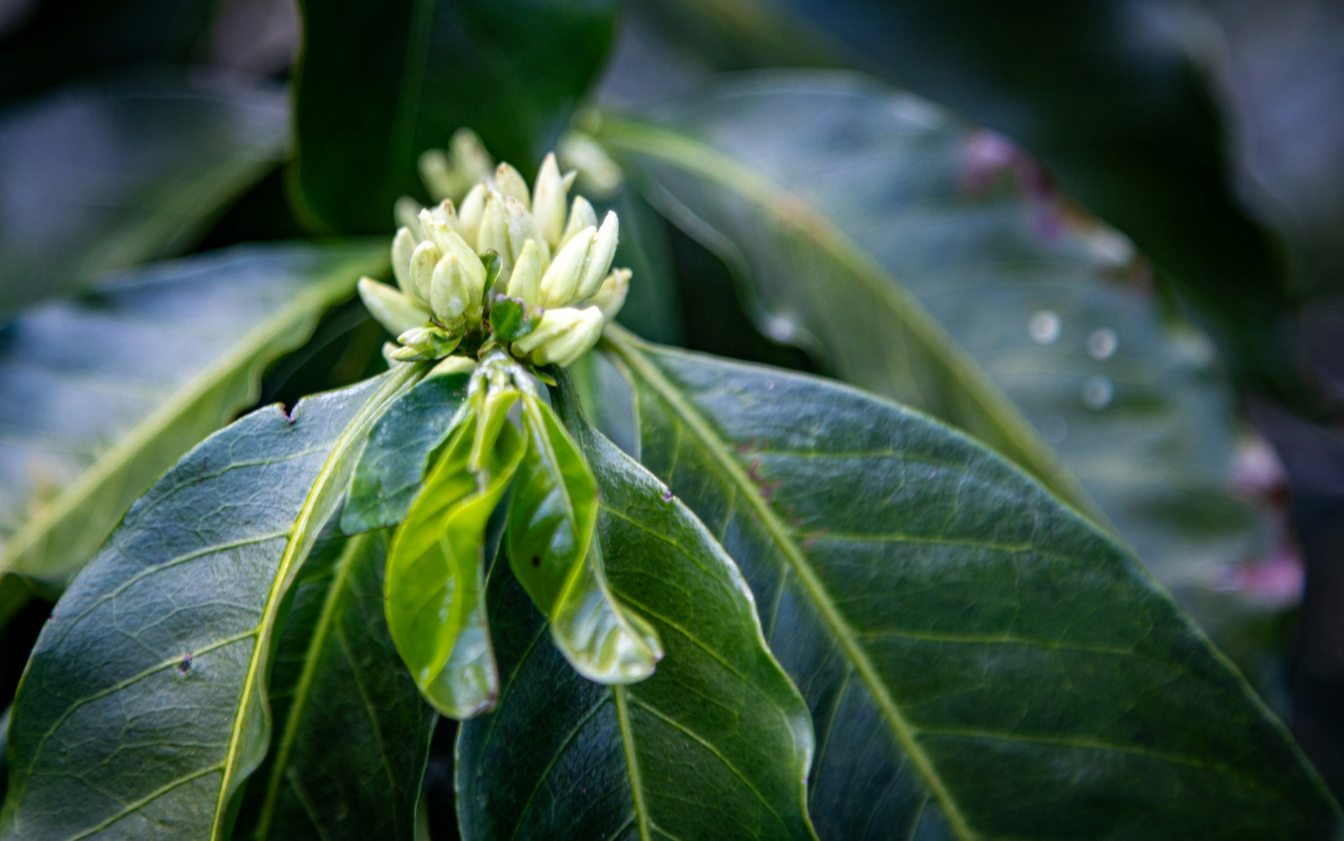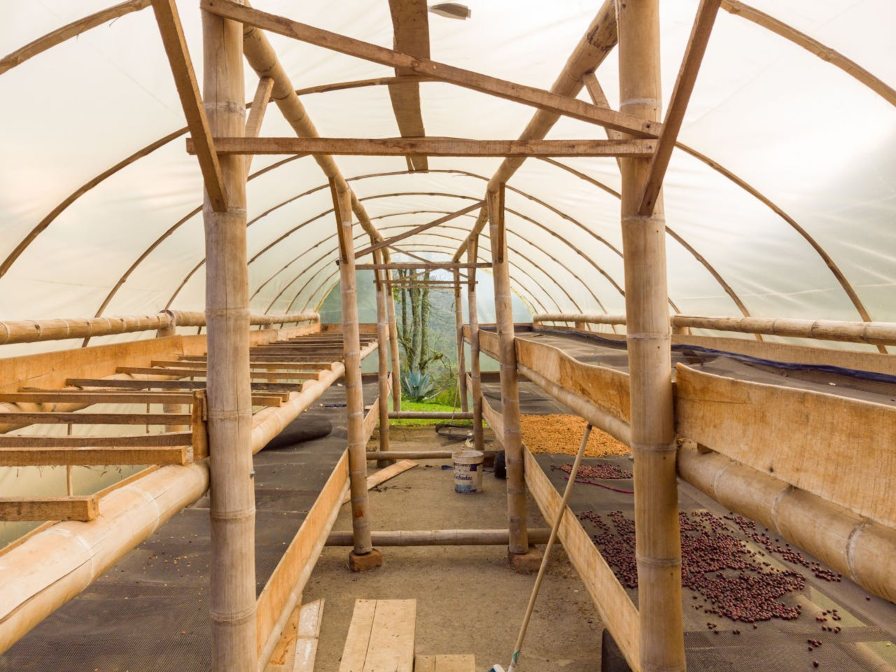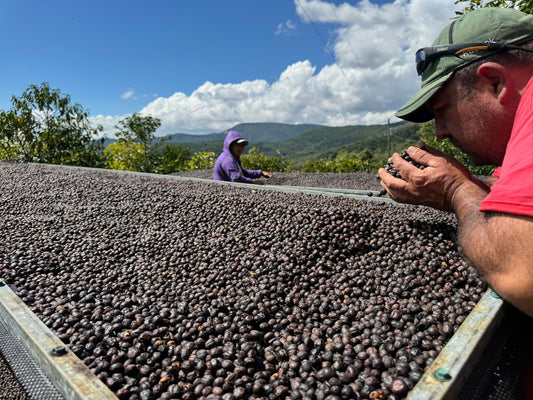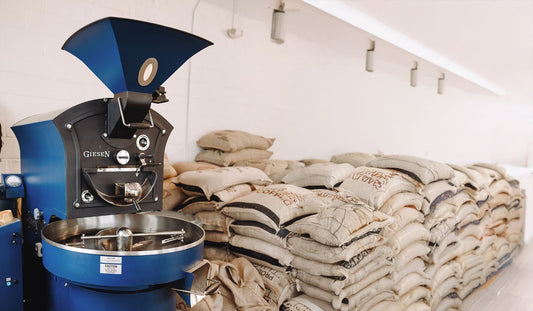Growing coffee is an intricate – and lengthy – process. It takes years for newly planted coffee trees to bear cherries ready for harvesting. And this doesn’t even include the incredible work of farmers that grow these plants and process the harvests. Understanding coffee’s growth and production only deepens our appreciation for each variety’s complex flavors and the cultures and communities that cultivate them. Join us as we explore coffee’s tenuous journey from the farm to your cup.
Coffee Bean Growth
Coffee beans are primarily grown in the Coffee Belt – the geographic region between the Tropics of Cancer and Capricorn. This includes Brazil, Ethiopia, and Indonesia, among others. They provide ideal growing conditions for coffee – a temperate climate, plenty of sunshine, and high altitudes. They also lack frost, though climate change is increasingly affecting these stable conditions, leading to issues like erratic rainfall and rising temperatures.
Planting the Seed
Coffee is typically planted during the wet season to ensure the soil remains moist, allowing the roots to establish. After 4-6 weeks, the seeds develop into seedlings, which are then transferred to beds or containers in nurseries. These seedlings stay there for about 6-12 months, depending on the region, and are watered and kept shaded from direct sunlight. Only after they reach a sufficient size—about 12-24 inches tall—are they ready to be permanently planted in the fields.
Coffee is grown in fertile, well-drained soil. Volcanic soil is ideal, as it’s composed of rich minerals and nutrients that assist growth. These soils also affect taste, adding depth and complexity to specialty coffee beans like our bold and smooth Brazilian coffee!
Coffee Bean Growth and Production Process: Flowering

It can take 3-4 years for coffee plants to produce their first crop. The plants begin to sprout small, white blossoms with a scent reminiscent of jasmine.
Rainfall is needed for these plants to flower. However, climate change and a lack of subsequent rainfall has made water scarcity a concern for many farmers and coffee producers in certain growing regions, such as Zambia. This has made water irrigation strategies and water management essential to combat drought and ensure coffee bean growth.
Flowers only bloom for a few days. Then, they fall to the ground and leave behind small nubs, or carpels. These grow into green cherries in just a few months.
Cherry Growth and Harvest
Green coffee cherries grow for around 9 months. They’ll slowly begin to ripen, turning yellow, orange, or red depending on the variety. This is when they’re ready to be harvested. Cherries can be picked by machine or hand; our single-origin coffee is handpicked.
Farmers take great care picking ripened cherries. Since cherries don’t all ripen at the same time, multiple passes are often required for each plant, increasing labor intensity but also quality.
Coffee Processing

Processing is a critical part of coffee bean production. It impacts the entire flavor profile of coffee, making the difference between a sweet, full-bodied coffee and one that’s light and crisp. Like coffee bean growth, the method used can vary from region to region.
Processing
Wet Processing - Wet processing is most common in regions with abundant water resources, such as Colombia and Central America, where the climate allows for more efficient fermentation. In this method, depulping removes the skin and pulp from the cherries. They are then fermented to break down the mucilage, with the process lasting between 12-48 hours, depending on altitude and climate conditions. Once fermented, the beans are dried, traditionally on patios or raised beds, though mechanical dryers may also be used, especially in areas with less predictable weather.
Flavor Profile: These coffees are bright and crisp, with higher acidity. They’re often described as having pronounced fruity or nutty flavors.
Dry Processing - This coffee production process involves drying the harvested cherries on raised beds or patios in the sun to dry. This method can take several weeks, and the cherries must be turned regularly to ensure even drying. It’s a common method in areas where traditional infrastructure for wet processing is less developed, or where the climate is consistently sunny and dry, like Ethiopia.
Flavor Profile: They’re usually lower in acidity, fruity, and have notes of berries and chocolate.
Honey Processing - This is a hybrid method, where some mucilage is left on the beans during drying, creating a spectrum of flavor profiles depending on how much is left and how long they’re dried! Differing sunlight during their drying process also affects flavor. Honey processing is most common in Brazil.
Flavor Profile: It depends on mucilage and sunlight, but Black Honey coffee, which leaves the most mucilage and is often dried under shade, is sweet with notes of orange and roasted nuts.
Coffee Bean Production: Roasting Green Coffee

All processed beans are hulled. This means the entire dried husk is removed and they’re sorted for impurities. They’re then shipped and sent to roasters!
Roasting is a crucial step that transforms the green coffee into the aromatic coffee beans we all love. During roasting, the sugars in the beans caramelize, creating complex flavors and aromas. Roasting temperatures typically range from 370-540°F, with lighter roasts preserving more acidity and fruity notes, while darker roasts enhance bolder, smoky, or caramelized flavors. The roasting process also alters the bean’s physical structure, leading to an increase in size and the creation of the familiar coffee aroma.
Understanding Coffee Bean Growth
We take a farm-to-cup approach at Ebru Coffee. As a coffee producer, roaster, and retailer, we bring coffee from the community producing to the community consuming. This enables us to capture the vibrancy of each region and coffee variety through sustainable production and meticulous roasting. Shop our specialty coffee store!





